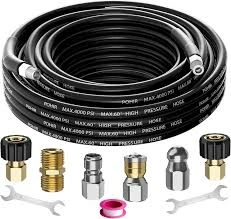Guide to Replacing Power Steering Hose Effectively and Safely
How to Change the Power Steering Hose
Changing the power steering hose is a critical maintenance task that can help ensure the smooth operation of your vehicle's steering system. Over time, power steering hoses can become worn out, develop leaks, or become damaged, leading to decreased steering performance and potential damage to the power steering pump. Here’s a step-by-step guide on how to change the power steering hose in your car.
Tools and Materials Needed
1. New power steering hose 2. Wrench set 3. Screwdrivers 4. Pliers 5. Fluid catch pan 6. Power steering fluid 7. Rags or shop towels 8. Safety goggles and gloves
Step 1 Prepare Your Vehicle
Before you begin, ensure the vehicle is parked on a flat surface and the engine is turned off. Allow the engine to cool down, as the power steering system can be under pressure and hot components may cause burns. Once the vehicle is secured, you can raise it using jack stands if needed to access the hose more easily.
Step 2 Locate the Power Steering Hose
Open the hood and locate the power steering reservoir. Follow the hoses from the reservoir; you will identify the high-pressure hose and the return hose. Depending on your vehicle, the exact location can vary, so consulting your owner’s manual for details on your specific model is advisable.
Step 3 Drain the Power Steering Fluid
Using a fluid catch pan, remove the power steering fluid from the reservoir to prevent spills. Loosen the cap and allow the fluid to drain completely. This step is crucial to avoid a mess and make the process easier.
how to change power steering hose

Step 4 Remove the Old Hose
Using the appropriate wrench or pliers, loosen the clamps holding the power steering hose in place. Start with the end connected to the steering rack or pump, depending on which hose you are replacing. Carefully remove the hose from its connectors, ensuring you are ready to accept any remaining fluid that may drip out.
Step 5 Install the New Hose
Position the new power steering hose in place. First, attach it to the steering rack or pump, ensuring that it fits securely. Tighten the clamps or fittings appropriately to prevent any leaks. Repeat this process for the other end of the hose, taking care to secure all connections properly.
Step 6 Refill the Power Steering Fluid
Once the new hose is installed, refill the power steering reservoir with fresh fluid according to your vehicle’s specifications. Make sure not to overfill it, and replace the cap when done.
Step 7 Test the System
Start the engine and turn the steering wheel back and forth to help circulate the new fluid. Check for any leaks around the new hose connections. If everything appears secure and there are no leaks, you have successfully changed the power steering hose.
In conclusion, changing the power steering hose is a manageable DIY project that can save you time and money. Regular maintenance will not only enhance your vehicle's performance but also extend its lifespan. Always refer to your owner's manual for specific instructions related to your car model.
-
Understanding Power Steering Tube ReplacementNewsApr.16,2025
-
SAE J1401 Brake Hoses: A Critical Component for Vehicle SafetyNewsApr.16,2025
-
Pipe Couplings: Essential Components for Effective Plumbing and Fluid SystemsNewsApr.16,2025
-
Hose Guard Solutions for Every NeedNewsApr.16,2025
-
Effective Spiral Protection SolutionsNewsApr.16,2025
-
Effective Sewer Cleaning SolutionsNewsApr.16,2025

